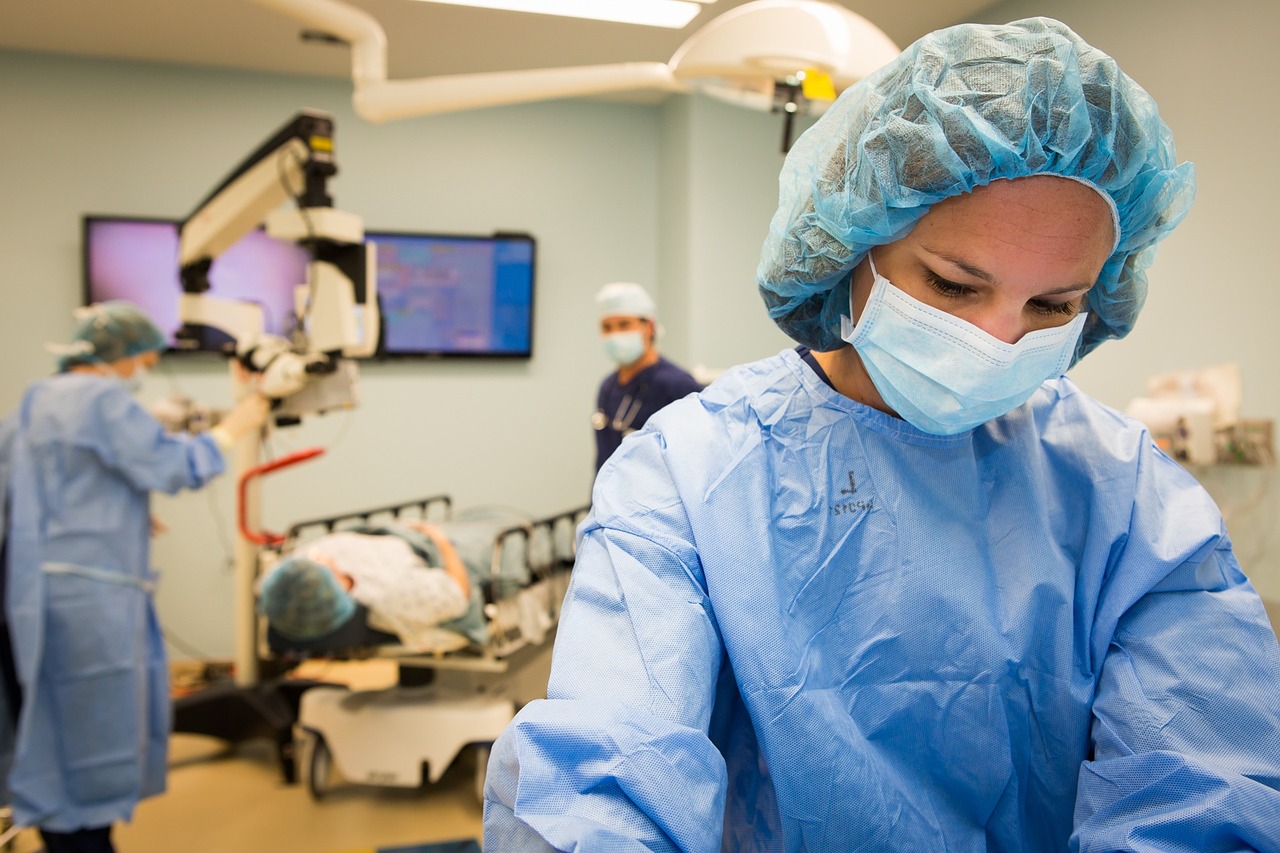Are you considering becoming a nurse but need help improving your communication skills? You are not alone. The good news is that you can practice your communication skills during the Vocational Nursing program at CyberTex. And you will continue to improve your communication skills throughout your career. So, what is good communication?
What Is Good Communication?
For a vocational nurse, good communication is:
Empathetic
Thoughtful communication is built on respect for others’ ideas, opinions, and feelings. It requires respect and empathy for their perspectives, even when there are disagreements.
Respectful
A vocational nurse communicates with colleagues and patients. However, because social and therapeutic relationships are different, the rules and expectations for communication vary. With patients and peers, a respectful tone is essential.
Clear
Good communication is clear and easily understood. It uses language that is simple and appropriate for the intended audience. Nurses should collect their thoughts before engaging in meaningful dialogue and craft a clear message. Education level and cultural and age-related biases affect how communication is received and should always be considered. Avoiding jargon and excessive use of technical terms is essential in healthcare settings.
Concise
Messages that are too complex may be disregarded. Whether a vocational nurse is educating a patient about post-surgical care or reporting concerning symptoms to a physician, making points quickly gets the point across.
Adaptable
Effective dialogue requires adapting communication styles to different situations and individuals. Tone, volume, and detail should be based on the audience’s needs, preferences, and background.
Confident
Confidence conveys credibility. In a professional environment, it demonstrates expertise in the topic of conversation. Not to be confused with being aggressive, confidence is a gentle form of assertiveness.
.
Sensitive
Patients appreciate expertise but are less likely to benefit from a healthcare provider’s advice if it’s delivered without compassion. Patients in crisis are emotionally vulnerable. Nurses see the worst cases in healthcare and can become desensitized to others’ pain.
Today’s nurses work with patients of all age groups and from diverse cultural and socioeconomic backgrounds. Clinical outcomes improve when a vocational nurse uses communication approaches that work best for the patient.
Discrete
The Health Insurance Portability and Accountability Act of 1996 (HIPAA) regulates who can access a patient’s private medical information. In most cases, data may only be exchanged between healthcare providers with the patient’s consent. HIPAA violations may result in termination and hefty fines for employers. Vigilance and discretion are required.
What is the Role of Active Listening?
Listening is arguably the most challenging part of communicating. So, when a patient approaches a vocational nurse with an extensive list of symptoms, they must prioritize. Active listening is a technique that approaches communication holistically, examining what patients say in the context of non-verbal cues by:
Connecting
The most essential part of communication is personal connection. If patients believe you’re disinterested, they’ll tune out.
A vocational nurse should begin with a friendly introduction and make eye contact to let the patient know they are the focus of attention. It inspires a patient’s confidence, encouraging them to speak freely. No one wants to share intimate details about their lives with someone who isn’t listening.
Concentrating
Healthcare is fast-paced. It’s easy for a vocational nurse to prioritize tasks over people, reasoning that they benefit the patient. However, limiting distractions is critical so a nurse can listen thoughtfully to what patients are saying and evaluate a patient’s body language. Patients are keenly aware of distracted nurses.
Confirming
When patients speak, they expect the nurse to confirm or question what they said by offering feedback. Paraphrasing points periodically allows patients to clarify their message and move the conversation forward.
It is helpful to ask open-ended questions and invite patients to expand on their thoughts instead of giving yes or no answers. The point is to gather as much information as possible for the physician.
Why is Communication So Essential in Nursing?
Whether it’s verbal, written, or non-verbal effective communication:
Builds Trust
Good communication helps nurses establish rapport with patients. Patients are more likely to share personal information when approached respectfully. A nurse’s ability to articulate medical concerns helps patients make better treatment decisions. Plus, health outcomes improve when patients feel like equal partners in their care.
Promotes Patient Autonomy
Nurses serve as liaisons between patients and medical professionals. As advocates, they communicate the patient’s treatment preferences. As educators, they inform patients about their condition, allowing them to make decisions that align with their values.
Improves Patient Safety
Medical mistakes are a serious public health problem. Most are attributable to communication errors. Medication mistakes occur mainly while prescribing medication. However, the nurses who transcribe orders and submit prescriptions can clarify vague requests or potential errors. They also confirm patient health history details, confirming medication allergies and other critical factors doctors consider when selecting pharmaceutical treatments.
Supports Continuity of Care
Continuity of care refers to coordinated care of patients across healthcare settings by different providers. The goal is to deliver seamless care through treatment from the first point of contact.
Nurses play a crucial role in the continuity of care because they help coordinate healthcare services. This requires sharing vital medical information between nurses, physicians, and other medical professionals.
Boosts Health Outcomes
Nurses create holistic patient needs assessments, including physical findings and intervention strategies. These plans are personalized and consider the individual’s medical history, chief complaints, and other essential health data. Care plans guide the entire nursing staff, keeping the healthcare team on the same page.
Establishes a Treatment Record
Nurses document patient care. These notes serve several vital purposes, including legal protection. A transparent and objective nurse’s note confirms that a patient received appropriate care in keeping with regulatory requirements and best practices.
Documentation is also used to support billing. Reimbursement for healthcare services relies on nurses’ notes to support the medical necessity of care. Billing specialists review these notes when filing insurance forms. Accuracy is essential.
Reduces Workplace Stress
Poor communication can lead to nursing turnover. Nurses may cite a need for more administrative transparency and challenging collaborations with colleagues over long hours and night shifts for changing employment.
Nurses at odds with their peers create stress in an already emotional workplace. Minor conflicts can escalate, leading to discord that impacts patient care. Effective communication creates a sense of camaraderie, alleviating burnout. And when nurses get the emotional support they need, patients also experience support.
Helps Cultivate the Profession
Good communication helps nurses create a culture of improvement by allowing them to share knowledge and exchange ideas. It also gives nurses a voice in public policy. Whether testifying at a legislative hearing, presenting data at a professional gathering, or representing fellow nurses before management, nurses are powerful voices for change.
Documentation
A vocational nurse caring for patients may need to write multiple notes in a shift. Clear, concise communication saves time for the nurse writing the note and the nurses on the next shift who will refer to those notes.
Reporting
The end-of-shift report is the oncoming nurse’s primary source of patient information. On a busy night, there’s no time to review charts, so nurses from both shifts get together for a few minutes to share essential details about patients’ conditions.
Phone Calls
Changes in a patient’s condition must be reported immediately, but calling a tired physician in the early morning without being prepared can erode trust. Vocational nurses must obtain the information the doctor needs before dialing.
Similarly, nurses should be prepared to answer questions when calling an anxious patient about a test result. Taking time to think before calling improves communication and enhances patients’ confidence.
Patient Education
Patient education is a nurse’s primary role. A vocational nurse should be confident when explaining physician’s orders and answering questions about health topics. Education should be patient-centered, so learning more about patients and their communication preferences is vital for good health outcomes.
Taking Orders
Some medication errors in hospitals occur due to inaccurate transcription. Illegible handwriting and short turnaround time contribute to the problem, but ultimately, nurses are responsible for the orders they transcribe. If an order isn’t clear, clarification must be confirmed, and spelling is essential.
Licensed Vocational Nurse
Classes for the Vocational Nursing program are conducted in a student-friendly atmosphere conveniently located in Austin, Texas. After graduating from the Licensed Vocational Nursing program, students can apply to take the National Council Licensure Examination for Practical Nurses (NCLEX-PN), become a Licensed Vocational Nurse (LVN), and start their exciting new career immediately.
Contact us today to learn more about our CyberTex Austin campus.





